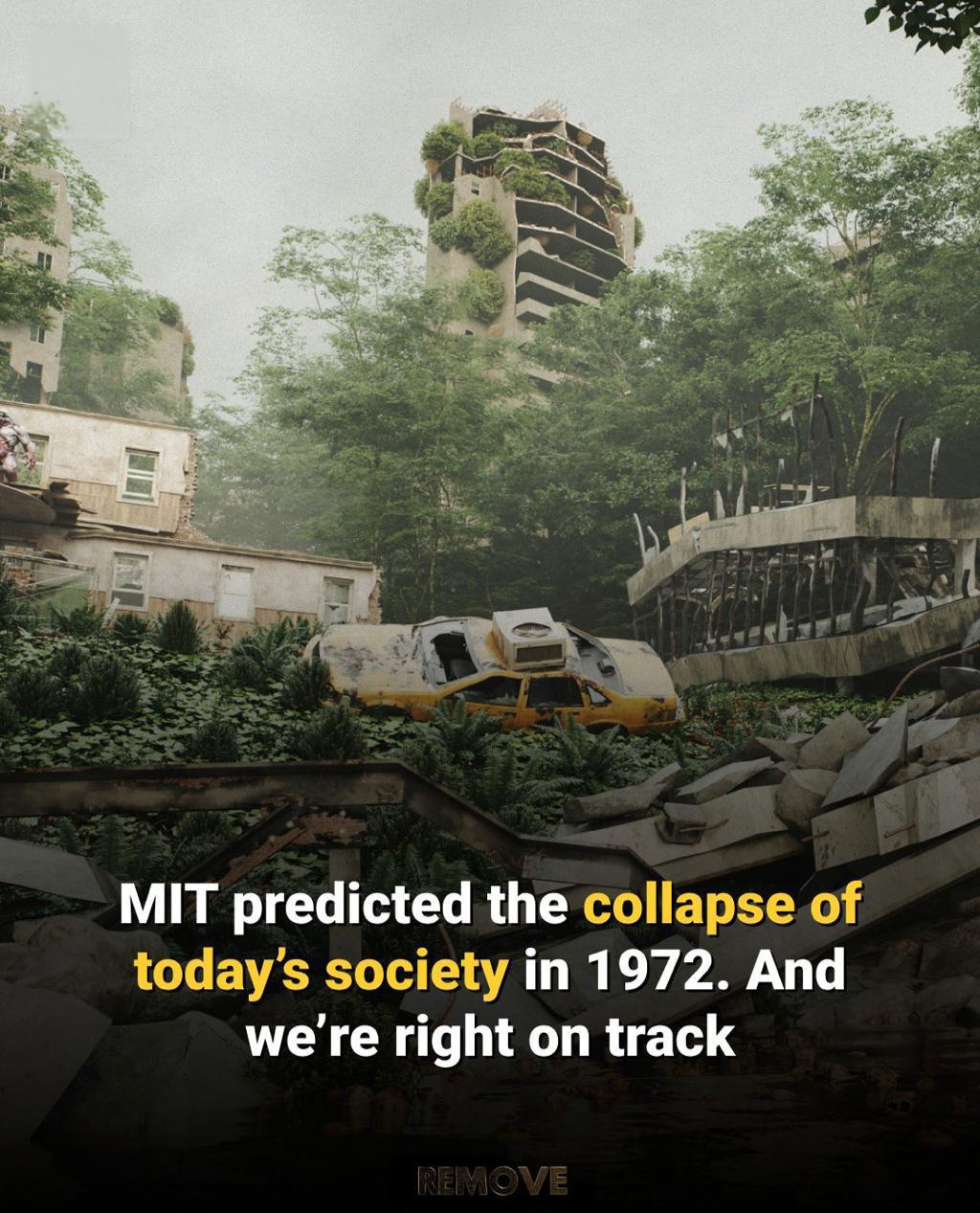In 1972, researchers at the Massachusetts Institute of Technology (MIT) shook the world with a groundbreaking prediction: society as we know it could collapse sometime within the 21st century. Using a system dynamics model called “Limits to Growth” (LtG), they examined the strain industrial civilization was placing on the planet’s finite resources. Their analysis suggested that unchecked consumption, pollution, and population growth would eventually drive humanity into a period of decline. At the time, the report was both controversial and widely discussed. Now, nearly five decades later, new research shows we’re still on the same track—only this time, the warning signs are much harder to ignore.

Revisiting the MIT Model
The original MIT team used dynamic modeling to simulate global trends. Their findings showed that if humanity continued on its “business as usual” path—consuming resources without restraint and relying on rapid industrial expansion—civilization could face collapse during the 21st century. Critics dismissed the work as too pessimistic, but history has shown otherwise. Rising pollution, increasing pressure on ecosystems, and an ever-growing population have continued to push the planet’s limits.
Recently, Gaya Harrington, a sustainability researcher and system dynamics expert at KPMG, revisited the MIT model to see whether its projections still hold. She compared decades of new data against the original scenarios. The results were sobering: humanity is still aligned with the same troubling pathways predicted in the 1970s. In fact, Harrington’s analysis suggests societal breakdown could arrive sooner than expected—possibly within the next two decades.
The Warning Signs
Harrington identified ten key variables that drive societal stability. These include population growth, fertility and mortality rates, industrial output, food production, available services, non-renewable resources, pollution levels, ecological footprint, and overall human welfare. When compared against current global data, the trends closely match two scenarios outlined in the MIT study: “Business as Usual 2” (BAU2) and “Comprehensive Technology” (CT).
Both scenarios predict significant economic decline beginning around 2040. The BAU2 path leads to severe disruptions, while the CT model allows technology to slow some damage but still results in a downturn. The similarity between today’s global indicators and these scenarios suggests that society is indeed heading toward a critical point.
Is There Hope?
While the findings are grim, Harrington emphasizes that collapse is not inevitable. Another pathway, known as the “Stabilized World” (SW) scenario, presents a more optimistic outcome. In this model, global society embraces sustainability, invests heavily in public health and education, and harnesses technology responsibly. This leads to smaller economic declines and avoids the worst effects of collapse.
The SW scenario highlights the importance of making deliberate, collective choices. It shows that while humanity may already be nearing the brink, it’s still possible to steer toward a future that balances growth with sustainability. Achieving this, however, will require bold action—reducing dependence on non-renewable resources, cutting pollution, rethinking consumption habits, and prioritizing human and ecological well-being over short-term profit.
The Takeaway
MIT’s 1972 prediction was never meant to be a doomsday prophecy, but rather a warning—a call to change course before it’s too late. Today, Harrington’s research demonstrates that the warnings remain valid and more urgent than ever. If nothing changes, society may face widespread decline within our lifetimes. But if humanity embraces innovation, sustainability, and global cooperation, there is still a chance to stabilize the system and build a future that endures.
The choice is ours.





